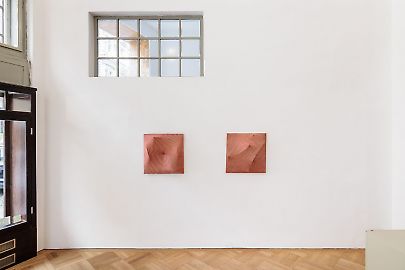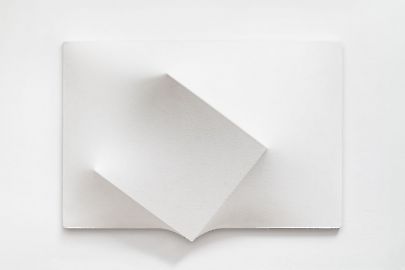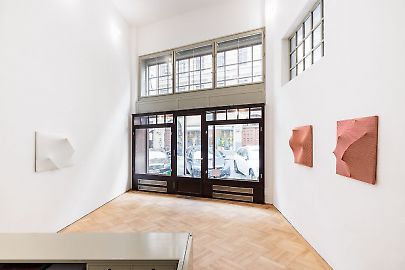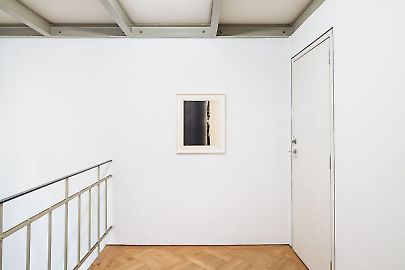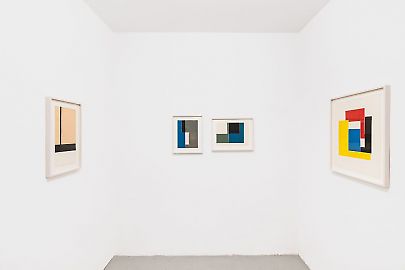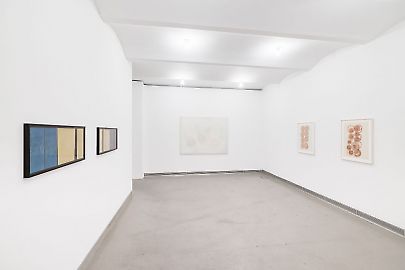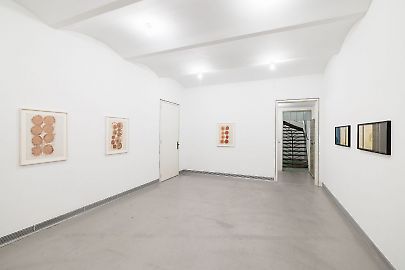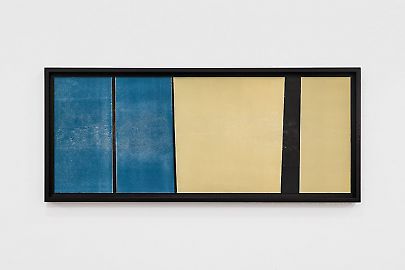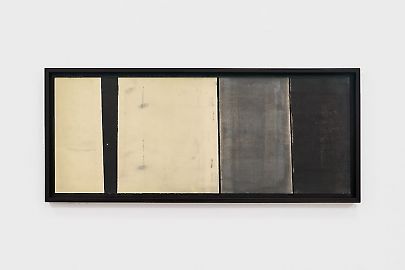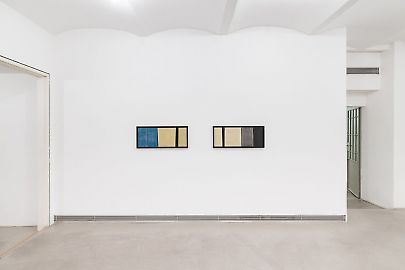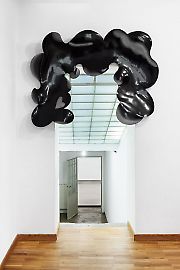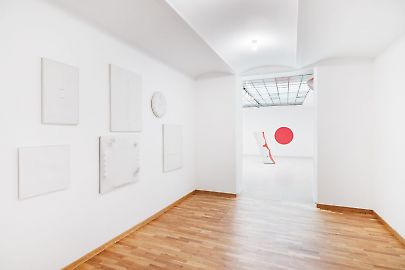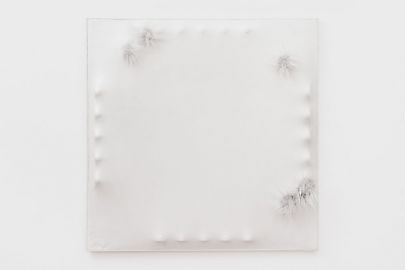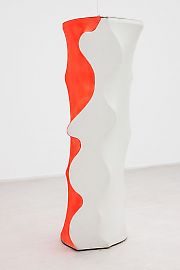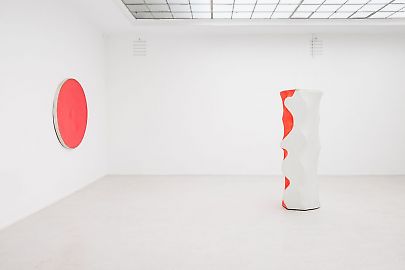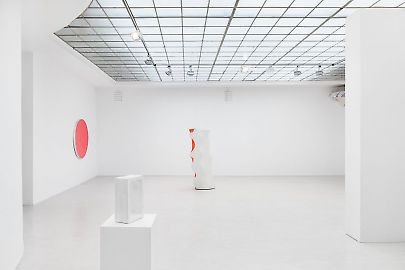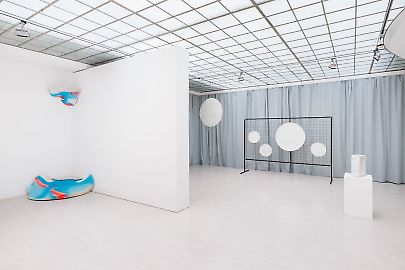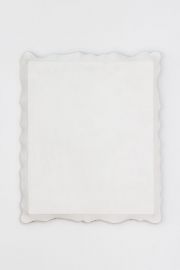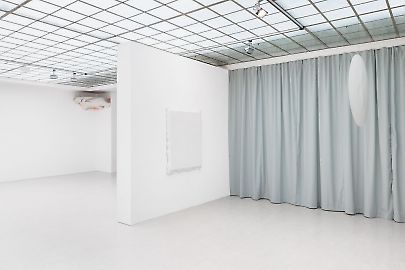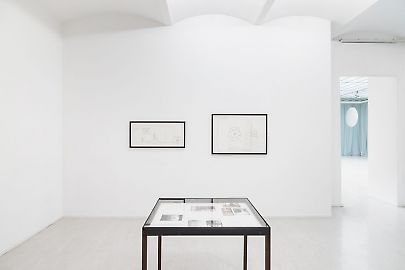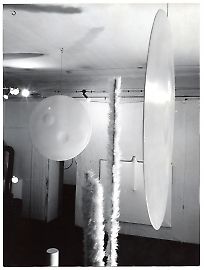Erwin Thorn -- approaching space – androgynous, approaching space – meta-a-morphosis
The plurality of approach towards space is an essential theme in Erwin Thorn’s work – the behavior of the works in space, their relationship to the space surrounding it, but also the behavior of the beholders towards them. His sculptural pictorial corpora demand positioning in both a literal and figurative sense, because for Thorn, space was always a social sphere. The word “restrained” can also be applied here as an adjective: Thorn’s works assert an immediate presence without being intrusive. They restrict themselves to a minimum of means of expression and, precisely in their reduction, develop a sensual, abstract intensity that dynamizes space as a reference magnitude and shifts the relationship between center and periphery.
Born in Vienna in 1930, Erwin Thorn survived the Nazi era in Palestine. In the 1950s he studied at the University of Applied Arts in Vienna, took part in international exhibitions with the protagonists of the ZERO movement at the invitation of Lucio Fontana, and in 1969 and 1972 had solo presentations at the Galerie nächst St. Stephan, one of the most important addresses of Austrian art discourse at the time, as well as at Grita Insam’s Modern Art Gallery in 1979. With his puristic pictorial language, the deconstruction of the traditional image medium, and its biomorphic expansion into space, he clearly positioned himself in the European postwar avant-garde. And yet there are constants running through this work that differ from the international tendencies to which Thorn’s work can be ostensibly ascribed. The analytical coalesces with the playful, the abstract form is charged with socially critical and political connotations, and the conceptual leaves room for subtle irony. For Thorn, the color white means metaphysical clarity, but also marks the new beginning of an art, liberated from the historical canon, which develops its own visual grammar and poetic language. Concave and convex curvatures on discs and pictorial objects or delicate, colored circular shapes in early paintings and monotypes appear like intimate body fragments, just as there is a pronounced relationship to the corporeal throughout his oeuvre.
The transition from the ZERO aesthetic, which still characterizes Thorn’s works from the 1960s, to post-conceptual works that reflect space as architecture takes place in a gradual process that activates a visual-spatial vocabulary that has developed over the years. Modulations of light, few color impulses, the interaction of the autonomous image surface with the space, the shifting to amorphous form and sensual-tactile materials have been part of this artistic language from the beginning.
White images are loaded with th"e productive power of negation and the narratives of nothingness. Structural images encounter three-dimensional objects with pictorial relief. Frames are deconstructed so that the canvas can extend into the space. Its surface becomes a breathing membrane as the occurrence moves from the image to the edge. Or the work detaches itself from the wall and becomes a floating disc. Later, Thorn frees it completely from its status as an object, dissolving its boundaries into architecture. Cancan (1968/69), made of black sheet iron, sits enthroned like a baldachin above the door frame. Untitled (1979), consisting of canvas with faux fur, nestles in the corner like a niche for a figure of a saint. For Thorn, the conservative image of man’s likeness to God as an ideological superstructure of the pursuit of prestige and power dominated the social structure up to the present. He therefore allowed the pedestal to flow amorphously into the space. He also avoided anything monumental because he was suspicious of the exaggeration of the artist’s subject. Thorn satirized hierarchies and power imbalances in patriarchy, as well as in art and society in classical, ancient columns that seem to be melting.
Experiencing the work in the situation-specific contemplation, however, remained a constant in this extraordinary oeuvre, which freed art from the conventions of the day to lend it timeless resonance. In a note that underlines Thorn’s affinity for linguistics and poetry, he adds two additional terms to the “behavior towards space”: androgynous and metamorphosis, the latter broken down into syllables and given an additional “a”: meta - a - morphosis. The transformation combines with the amorphous, the meta-level becomes part of the concept, and the space in between emphasizes the potential of that which evades clarity. In this sense, Thorn’s works situate themselves beyond classical dichotomies in a sphere of the fluid and transitive. They appropriate the space and present themselves as figures whose condition is constantly in a state of flux. Plural in their appearance, they enable imaginative access to the experiential space they create.
Vanessa Joan Müller
(translated by Brian Dorsey)
https://www.artmagazine.cc/content129869.html


